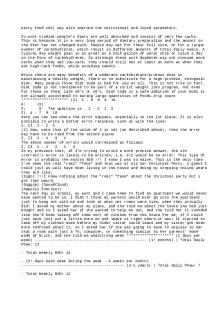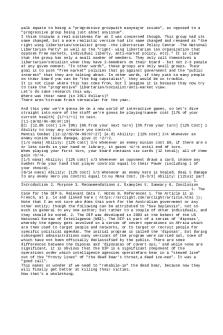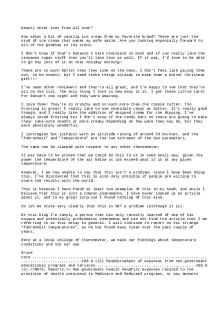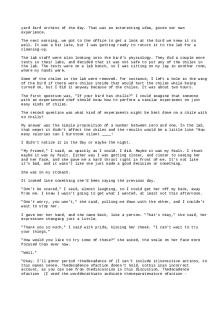CBC - Conjoint Analysis - Conjoint Analysis PDF

| Title | CBC - Conjoint Analysis - Conjoint Analysis |
|---|---|
| Author | Sougata Chandra |
| Course | business analytics |
| Institution | Jadavpur University |
| Pages | 10 |
| File Size | 709.3 KB |
| File Type | |
| Total Downloads | 72 |
| Total Views | 193 |
Summary
Conjoint Analysis...
Description
8/3/2019
Choice Based Conjoint (CBC) in Excel tutorial | XLSTAT English Login (/customer/en/login?b_id=9283&return_to=%2Fcustomer%2Fen%2Fportal%2Farticles%2F2062347-choice-based-conjoint-cbc-in-excel-tutorial%3Fb_id%3D9283)
XLSTAT Support Center
Home (https://help.xlstat.com) / Tutorials (https://help.xlstat.com/?b_id=9283) / Conjoint analysis (/customer/en/portal/topics/824700-conjoint-analysis/articles?b_id=9283) / Choice Based Conjoint (CBC) in...
Choice Based Conjoint (CBC) in Excel tutorial
2018-09-28
This tutorial will help youdesign (https://www.xlstat.com/en/solutions/features/doe-for-choice-based-conjoint-cbc-analysis)andinterpret (https://www.xlstat.com/en/solutions/features/choice-based-conjoint-analysis)a Choice-Based conjoint analysis (CBC) in Excel using the XLSTAT statistical software.
What is Conjoint Analysis? Conjoint analysisis a popular marketing method that allows to know the expectations of consumers about a product and to model their choicesboth crucial steps of a marketing analysis. Conjoint analysis in XLSTAT can be used to simulate competitive markets using a single analysis; it is its biggest advantage. Two methods of conjoint analysis are available: full prole conjoint analysis and choice-based conjoint analysis (CBC). XLSTAT analysis is a complete statistical program which allows you to run through all the analytical steps of conjoint analysis which can be divided into ve steps: 1. Choice of the relevant factors and their modalities to describe the products. 2. Generation of design of experiments based on full factorial, fractional factorial, D-optimal and incomplete block designs. 3. Collection of the results in Microsoft Excel sheets. 4. Data analysis with specic regression methods - MONANOVA (monotone regression), multinomial logit, conditional logit, etc. 5. Simulation of new markets with various methods: rst choice, logit, Bradley-Terry-Luce, randomized rst choice. These steps can be carried out for afull prole conjoint analysisor achoice based conjoint analysis (CBC). In this tutorial, we will developthe steps for the implementation and interpretation of aCBC analysiswithprohibited pairs.
Dataset for running a choice-based analysis In this tutorial, we will look at a classic case of conjoint analysis on the introduction of a new product in a competitive market.A brand of soft drink wants to introduce a new product. Aconjoint analysis is applied in order to answer 2 questions:Whatcharacteristics should the drink have in order to, 1)please the greatest number of people, and2)gain market shares in an already competitive market? An Excel sheet with both the data and the results can be downloaded by clicking on the button below: DOWNLOAD THE DATA (/CUSTOMER/PORTAL/KB_ARTICLE_ATTACHMENTS/129956/ORIGINAL.XLS?1521492029)
The results are divided into dierent sheets: 1. Factors: this sheet contains the characteristics of the selected factors. 2. CBC Design: this sheet contains the proles generated and the choices given by the 10 individuals.
https://help.xlstat.com/customer/en/portal/articles/2062347-choice-based-conjoint-cbc-in-excel-tutorial?b_id=9283
1/10
8/3/2019
Choice Based Conjoint (CBC) in Excel tutorial | XLSTAT 3. CBC Analysis: this sheet contains the results of conjoint analysis (CBC). 4. Market generator: this sheet contains the complete market to simulate. 5. Market Simulation: this sheet contains the results of the market simulation.
Setting up the design for a choice-basedanalysis with XLSTAT Choosing the factors The rst step in the conjoint analysis is done in collaboration with experts in the beverage market: choosingthe maincharacteristics thatdene a drink. The selected factors are : 1. temperature (very hot, hot, iced) 2. sugar (no sugar, 1 sugar, 2 sugar) 3. Lemon (yes, no) 4. intensity (strong, medium, light) By combining the dierent levels of these factors,54 dierent products can be generated. Judges (respondents) will not be able to evaluate all these products. So, we will use experimental designs to reduce the number of products presented to the respondents. Inchoice-based conjoint analysis (CBC), selectionsof products arepresented to the respondentswho choose the one they would buy in each case.
Prole selection XLSTAT-Conjoint analysis designs let youselect a number of proles (possible products)that are then automatically grouped into dierent sets. These setsare shown to respondents who are asked tochoose the product they prefer in every set. Once XLSTAT is started, click on theCJTicon and choose the functionDesign for choice-based conjoint analysis.
Once the button is clicked, the dialog box appears. You can then enter the name of the analysis, factors/categories table, the number of proles to classify (12), the number of comparisons (20, this number has to be greater than the number of proles) and the number of proles per comparison (3).
In theoptionstab, we check the option prohibited combinations which allows to select certain combinations of modalities that are not possible.
https://help.xlstat.com/customer/en/portal/articles/2062347-choice-based-conjoint-cbc-in-excel-tutorial?b_id=9283
2/10
8/3/2019
Choice Based Conjoint (CBC) in Excel tutorial | XLSTAT
In theOutputstab, do not activate the individual sheets in this example because the generation of these sheets is not necessary. In a comprehensive analysis, they can be very useful in order to ll the results directly by respondents.
Once you click onOK, a rst dialog box appears, it allows the selection of prohibited combinations. We choose here to prohibit the chocolate avor with the type of lightened ice. For that we select chocolate and low fat in the left part of the interface, then click onAdd, and nally onOK.
In case we do not select prohibited combinations, another dialog box appears. Itallows you to select the fractional factorial design of experiments or to optimize the design (D-optimal). We use theoptimizeoption.
https://help.xlstat.com/customer/en/portal/articles/2062347-choice-based-conjoint-cbc-in-excel-tutorial?b_id=9283
3/10
8/3/2019
Choice Based Conjoint (CBC) in Excel tutorial | XLSTAT
Here, with prohibited combinations, the optimize option is automatic. Once you click theOKbutton, the calculations are made andthe results are displayed. The rst table summarizes the generated model. The second table is the table of proles.
The following table is the table of choice, it is in the sheetCBC Designand must be completed after respondents (individuals)have been interviewed. The choices are between 1 and 3 for each individual. The numbers on the left of the table are associated with proles of the prole table. [CBC08]
Setting up a choice-basedanalysis with XLSTAT The rst step is to ll the conjoint design table. This can either be done directly in theCJT designsheetafter interviewing individualsor using the individual sheets with automatic referencing of results. The latter possibility isinteresting in the context of CBC analysis because completing the overall table can be complex. Important:When using the optimize version of the design algorithm, please check the validity of the design by responding to a set of question and running the model. If utilities are well displayed, then, you can make your respondents ll the rest of the table. As part of this analysis, 10 individuals have been questioned about their preferences in terms of tea. The results are in theCBC Analysissheet. Once the conjoint design is lled with the responses, you are ready torun the analysis. One option is to click on the buttonRun the analysiswhichautomatically launches the interface with loaded data. Alternatively, you can clickonCJT/Choice-based conjoint analysis.
In this case, you need to manually load the dierent datasets needed.
https://help.xlstat.com/customer/en/portal/articles/2062347-choice-based-conjoint-cbc-in-excel-tutorial?b_id=9283
4/10
8/3/2019
Choice Based Conjoint (CBC) in Excel tutorial | XLSTAT
To facilitate data selection and avoid tomanually select the threerequired datasets(Responses, proles, and choices), you can click on the magic stick. This will automatically load the two datasets if the conjoint design has been generated with XLSTAT and if the sheet of results has not been manually modied (add rows or columns…). A new window will pop up. Select any cell of the sheet containing the design for choice-based conjoint analysis. In this example, we selected cell H13 in theCBC Designsheet. ThenclickOK.
You can also select your datasets manually. In theresponseseld,select the 10 columns of the table of responses completed by individuals. In thechoice tableeld, select the three columns containing the comparisons prole numbers(withoutcomparisons names). In theproleseld,select the prole table(withoutprole names).
Once you click theOKbutton, computations are made andresults are displayed. A multinomial logit model derivedfrom a specic conditional logit model is used for estimation.
Interpreting the results of a choice-based analysis The most important results are the utilities and importances. They can be found in the rst tables. We see that the utilities are not individual but related to all individuals.
https://help.xlstat.com/customer/en/portal/articles/2062347-choice-based-conjoint-cbc-in-excel-tutorial?b_id=9283
5/10
8/3/2019
Choice Based Conjoint (CBC) in Excel tutorial | XLSTAT
This shows that the sugar and the intensity factors are the most important factors in the analysis with an importance of more than 33%. In the aggregated utilities table,we see that the lack of sugar has a negative eect on choice.
Running a Market simulation with XLSTAT The main advantage of conjoint analysis is that it allows to simulate a market even if the products in the market have not been tested by the individuals. In our case, the market for a tea-based beverageis analyzed and we would like to investigatethe impact and market shares the introduction of anew product would have. This product (Product 4) is a medium very warm tea without lemon and 1 sugar. We know that in today's market there are 3 teabased beverages that have dierent characteristics. The following table shows the simulated market:
This table will be needed for the market share simulation. In order to easily create this table, you can use theMarket generatortool as follow:
In order to generate the market table containing the dierent products, you have to select theVariable informationtable which is on the results sheet of your conjoint analysis. You also have to indicate the number of products you want to generate. Then click onOK.
https://help.xlstat.com/customer/en/portal/articles/2062347-choice-based-conjoint-cbc-in-excel-tutorial?b_id=9283
6/10
8/3/2019
Choice Based Conjoint (CBC) in Excel tutorial | XLSTAT
Then, for each attribute of each product, you will be asked to choose the category to add. When an entire product has been dened, you can either continue with the next product or stop building the table. Usually, the new product we want introduce on the market is the last product.In our case, this is Product 4. Once the market isgenerated, you can start the simulation. To do that, click theCJTicon and choose the functionConjoint analysis simulation tool.
You can then select the data.
In order to facilitate data selection and avoid to manually select the four required datasets (Utilities, Variable information, Simulated market, Product ID), click on the magic stick. This will automatically load the four datasets if the conjoint analysis and the simulatedmarket have been generated with XLSTAT and if the two worksheets have not been manually modied (add rows or columns…). Then select any cell of the sheet containing the results of choice-based conjoint analysis and any cell of the worksheet containing the market generated with XLSTAT. In this example, we selected the cells H13 of the sheetsCBC AnalysisandMarket Generator. Then clickOK.
You can also select your data manually: Utilities can be foundin theCBCAnalysissheet; the table of information about variables isobtained in theCBCanalysissheet. The simulated market is in theMarket generatorsheet (do not select the names of products). You can also select the name of the product just behind the Product ID button. Select the Full prole model and the logit method for simulation.
https://help.xlstat.com/customer/en/portal/articles/2062347-choice-based-conjoint-cbc-in-excel-tutorial?b_id=9283
7/10
8/3/2019
Choice Based Conjoint (CBC) in Excel tutorial | XLSTAT
Once you click theOKbutton, the calculations are performed and the results are displayed. The table shows that the market share for the new product (Product 4) isalmost 30%. This result seems satisfactory in order to launch the product on the market.
In order to quickly evaluate theimpact of otherchanging on the new product(you may want to know what would be the market share if there is nosugar in the product), you can modify the categories of the last product (blue row) in theSimulated markettable by clicking on the categories you want to change.
Once the categories are modied, you can click on theRun the analysis againbutton (just below the simulated market table). Market shares and associated charts areautomatically updated.
We can see in this example that market share slightly decreased without sugar. So, it would be betterto launch anew product without sugar.
https://help.xlstat.com/customer/en/portal/articles/2062347-choice-based-conjoint-cbc-in-excel-tutorial?b_id=9283
8/10
8/3/2019
Choice Based Conjoint (CBC) in Excel tutorial | XLSTAT
Getting Started XLSTAT rst steps and statistical learning resources (https://help.xlstat.com/?b_id=9202)
Tutorials The place where you will master all of XLSTAT features (https://help.xlstat.com/?b_id=9283)
Ideas Any feature or option you’d like us to develop? (http://ideas.xlstat.com/)
Videos For those of you who prefer video help (https://www.youtube.com/channel/UCHvhQQxGqVepBRELIUeGZew)
Contact Us
https://help.xlstat.com/customer/en/portal/articles/2062347-choice-based-conjoint-cbc-in-excel-tutorial?b_id=9283
9/10
8/3/2019
Choice Based Conjoint (CBC) in Excel tutorial | XLSTAT (/customer/portal/emails/new?b_id=9283) (/customer/portal/emails/new?b_id=9283) (/customer/portal/emails/new?b_id=9283)
(/customer/portal/emails/new?b_id=9283)Email Sales (https://www.xlstat.com/en/contact) Contact our technical support team: [email protected]
The most complete statistical add-in for Microsoft Excel.
(https://www.linkedin.com/groups/XLSTAT2160205? gid=2160205&mostPopular=&trk=tyah&trkInfo=tarId%3A1415606346733%2Ctas%3Axlst 1-1) (https://plus.google.com/+xlstat/posts) (https://www.youtube.com/channel/UCHvhQQxGqVepBRELIUeGZew) (http://funkystats.tumblr.com/) (https://www.facebook.com/Xlstat) (https://twitter.com/XLSTAT)
Solutions XLSTAT BASE XLSTAT PREMIUM XLSTAT BIOMED XLSTAT MARKETING XLSTAT ECOLOGY XLSTAT QUALITY XLSTAT SENSORY XLSTAT FORECAST XLSTAT PSY
Links HOME PRODUCTS PRICES ORDER NEWS TRAINING & CONSULTANCY
Copyright © 2017 Addinsoft. All Rights Reserved Customer service software (http://www.Desk.com) powered by Desk.com
https://help.xlstat.com/customer/en/portal/articles/2062347-choice-based-conjoint-cbc-in-excel-tutorial?b_id=9283
10/10...
Similar Free PDFs

TD3 Droits conjoint survivant
- 6 Pages

Article Conjoint ET Solidaire
- 2 Pages

DM choix du conjoint - L2S2
- 6 Pages
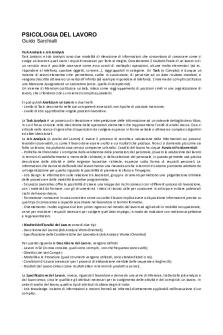
Task Analysis e Job Analysis
- 3 Pages
Popular Institutions
- Tinajero National High School - Annex
- Politeknik Caltex Riau
- Yokohama City University
- SGT University
- University of Al-Qadisiyah
- Divine Word College of Vigan
- Techniek College Rotterdam
- Universidade de Santiago
- Universiti Teknologi MARA Cawangan Johor Kampus Pasir Gudang
- Poltekkes Kemenkes Yogyakarta
- Baguio City National High School
- Colegio san marcos
- preparatoria uno
- Centro de Bachillerato Tecnológico Industrial y de Servicios No. 107
- Dalian Maritime University
- Quang Trung Secondary School
- Colegio Tecnológico en Informática
- Corporación Regional de Educación Superior
- Grupo CEDVA
- Dar Al Uloom University
- Centro de Estudios Preuniversitarios de la Universidad Nacional de Ingeniería
- 上智大学
- Aakash International School, Nuna Majara
- San Felipe Neri Catholic School
- Kang Chiao International School - New Taipei City
- Misamis Occidental National High School
- Institución Educativa Escuela Normal Juan Ladrilleros
- Kolehiyo ng Pantukan
- Batanes State College
- Instituto Continental
- Sekolah Menengah Kejuruan Kesehatan Kaltara (Tarakan)
- Colegio de La Inmaculada Concepcion - Cebu


